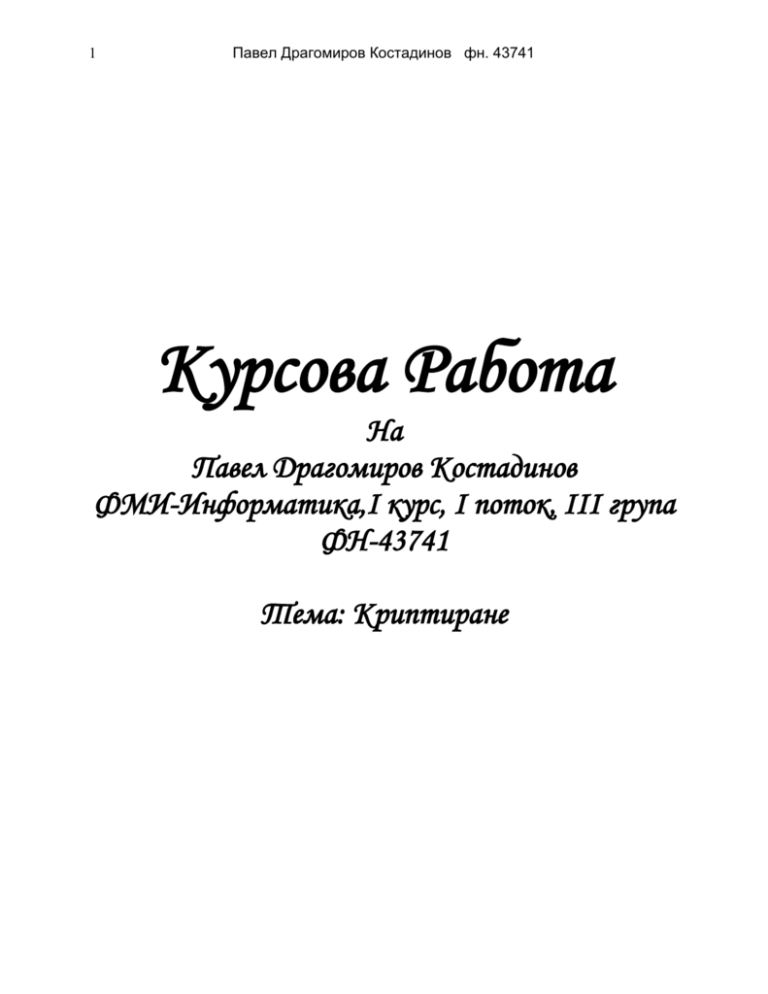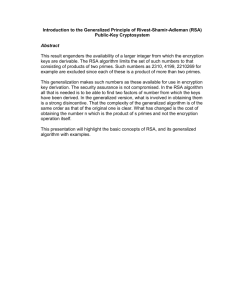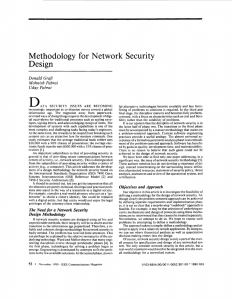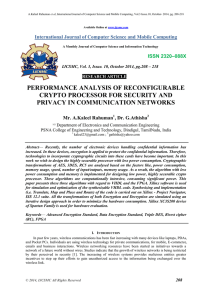
1
Павел Драгомиров Костадинов фн. 43741
Курсова Работа
На
Павел Драгомиров Костадинов
ФМИ-Информатика,I курс, I поток, III група
ФН-43741
Тема: Криптиране
2
Павел Драгомиров Костадинов фн. 43741
Article - Cryptography
Government agencies, banks, and many corporations now routinely send a great deal of
confidential information from one computer to another. Such data are usually
transmitted via telephone lines or other nonprivate channels, such as the Internet.
Continuing development of secure computer systems and networks will ensure that
confidential information can be securely transferred across computer networks. In the
early 1970s, Horst Feistel, a scientist at International Business Machines Corporation
(IBM Corporation), developed LUCIFER, a computerized cryptosystem that used both
substitution and transposition. In 1977 the United States National Bureau of
Standards (now the National Institute of Standards and Technology [NIST]) developed a
cryptographic technique called the Data Encryption Standard (DES). DES was based
on LUCIFER and made use of the computer binary code (converting plaintext to bits,
or binary digits of 1s and 0s). DES transformed 64-bit segments of information into 64bit segments of ciphertext using a key that was 56 bits in size. Each user randomly
selected a key and revealed it only to those persons authorized to see the protected
data. DES was broken in 1998. In 1978 three American computer scientists, Ronald L.
Rivest, Adi Shamir, and Leonard Adleman, who later founded the company RSA Data
Security, created the Rivest-Shamir-Adleman (RSA) system. The RSA system uses two
large prime numbers, p and q, multiplied to form a composite, n. The formula n = pq,
capitalizes on the very difficult problem of factoring prime numbers. See also Encryption;
Number Theory. As more and more information is transferred over computer networks,
computer scientists continue to develop more secure, complex algorithms. In 1997 the
NIST began coordinating development of a replacement for DES called Advanced
Encryption Standard (AES). AES will use a more complex algorithm, based on a 128-bit
encryption standard instead of the 64-bit standard of DES. This 128-bit algorithm will
make AES impossible to decrypt with current technology. Another encryption system
based on 128-bit segments is called International Data Encryption Algorithm, or IDEA.
The Swiss Federal Institute of Technology developed the IDEA standard in the 1990s.
Computer scientists have also proposed alternatives such as public-key cryptosystems
(PKCs), which use two types of keys, a public key and a private key. The public key
encrypts data, and a corresponding private key decrypts it. The user gives the public key
out to other users, and they can use the public key for encrypting messages to be sent
to the user. The user keeps the private key secret and uses it to decrypt received
messages. An example of a PKC is the RSA system, described above.1
Sources
1. Microsoft® Encarta® Reference Library 2003. © 1993-2002 Microsoft
Corporation. All rights reserved.
Glossary
3
Павел Драгомиров Костадинов фн. 43741
Encryption, process of converting messages or data into a form that cannot be read
without decrypting or deciphering it. The root of the word encryption—crypt—comes
from the Greek word kryptos, meaning “hidden” or “secret.”
Computer, machine that performs tasks, such as calculations or electronic
communication, under the control of a set of instructions called a program. Programs
usually reside within the computer and are retrieved and processed by the computer’s
electronics. The program results are stored or routed to output devices, such as video
display monitors or printers. Computers perform a wide variety of activities reliably,
accurately, and quickly;
Data, information, for example, numbers, text, images, and sounds, in a form that is
suitable for storage in or processing by a computer;
Transmit, to send something, pass something on, or cause something to spread, from
one person, thing, or place to another;
Internet, computer-based global information system. The Internet is composed of
many interconnected computer networks. Each network may link tens, hundreds, or
even thousands of computers, enabling them to share information with one another and
to share computational resources such as powerful supercomputers and databases of
information. The Internet has made it possible for people all over the world to effectively
and inexpensively communicate with one another. Unlike traditional broadcasting media,
such as radio and television, the Internet does not have a centralized distribution
system. Instead, an individual who has Internet access can communicate directly with
anyone else on the Internet, make information available to others, find information
provided by others, or sell products with a minimum overhead cost;
Network, techniques, physical connections, and computer programs used to link two
or more computers. Network users are able to share files, printers, and other resources;
send electronic messages; and run programs on other computers;
IBM, International Business Machines Corporation, one of the world’s largest
manufacturers of computers and a leading provider of computer-related products and
services worldwide. IBM makes computer hardware, software, microprocessors,
communications systems, servers, and workstations. Its products are used in business,
government, science, defense, education, medicine, and space exploration. IBM has its
headquarters in Armonk, New York;
4
Павел Драгомиров Костадинов фн. 43741
Binary code, a computer code that uses the binary number system. Numbers and
letters are translated into signals that a computer reads as sequences of ones and
zeros called binary digits (bits);
Prime number, a whole number that can only be divided without a remainder by itself
and one;
Formula, a rule or principle represented in symbols, numbers, or letters, often in the
form of an equation.
Substitution, the replacement of one mathematical element with another of equal
value;
Transposition, a transfer of a term from one side of an equation to another,
reversingthe sign;
Ciphertext, text that has been encrypted for transmission, for example, over the
Internet;
Decryption, render an encoded text or message into plain language;
5
Павел Драгомиров Костадинов фн. 43741
Exercises
Answer the questions!!!
1. Why is Cryptography absolutely necessary nowadays? Explain the word
‘Encryption’.
2. What is the name of the first cryptosystem, crated by Horst Feistel in
the early 1970s?
3. How many bits is the algorithm which will make AES impossible to decrypt with
current technology?
4. Where are the headquarters of IBM (State)?
5. When was DES (Data Encryption Standard) broken?
Fill in the blank spaces!!!
Government agencies, banks, and many corporations now routinely _____ a great deal
of confidential information from one computer to ______. Such data are usually
___________ via telephone lines or other nonprivate channels, such as the Internet.
Continuing development of secure computer systems and networks will ensure that
confidential __________ can be securely transferred across computer networks. In the
early 1970s, Horst Feistel, a scientist at International Business Machines Corporation
(IBM Corporation), developed LUCIFER, a computerized cryptosystem that used both
___________ and __________.












